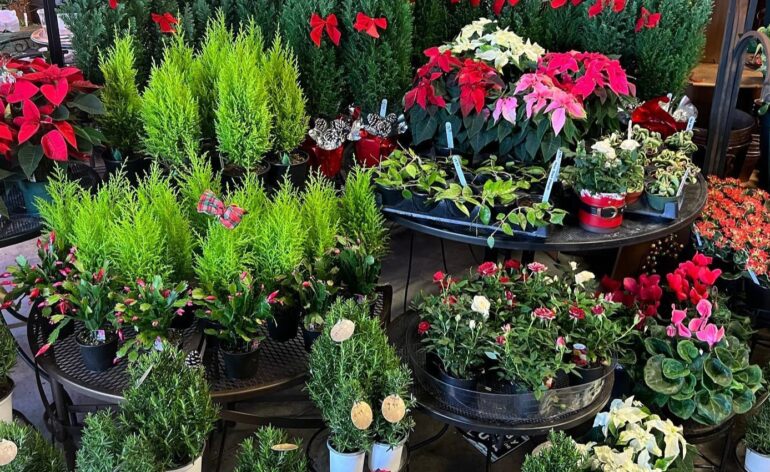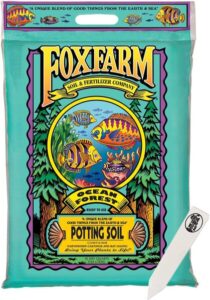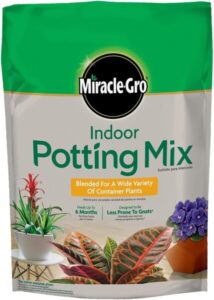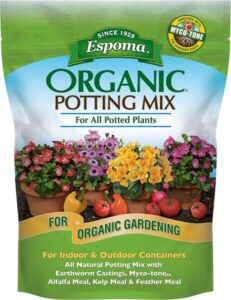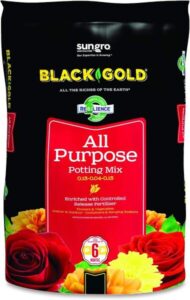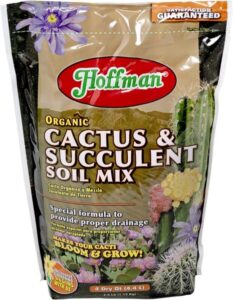6 Best Soils for Indoor Plants: It Starts with Great Dirt
We independently evaluate all recommended products and services. If you click on links we provide, we may receive compensation.
If you’re like most indoor gardeners, you’re passionate about the health and appearance of the plants that you share your space with. I know I’m definitely like that, too. That’s why I always make sure to choose the best soils for indoor plants.
Since indoor plants can’t access natural sources of nutrients like their outdoor cousins can, you need to make sure that the soil you choose can give them everything they need to stay healthy. But, there are almost as many types of potting soil for indoor plants as there are species of plant that thrive indoors.
Which one is the right choice for you will depend on lots of factors—most importantly the type of plant you’re planning on adding to your home or apartment.
In this article, we’ll go over six of the best soils for indoor plants that you can buy, as well as exploring why you might want to choose one or the other. Whether you’re a seasoned indoor growing pro or just starting out, I’m sure you can find the best indoor potting soil for your needs somewhere on this list.
Let’s get started!
Key Takeaways
After personally testing out many, many products and confirming my experiences using online reviews in my search for the best soils for indoor plants, I narrowed it down to the top six options. All of them come packed with essential nutrients, are aerated enough to avoid choking or drowning your plants, and offer great value for your money.
Overall, FoxFarm Ocean Forest Potting Soil Mix is tops among the best soils for indoor plants as a result of its high-quality ingredients and the fact that it comes with the perfect amount of nitrogen fertilizer already included. I’ve achieved consistently great results with this soil! There are some other great soils on this list for specific situations, like the Hoffman Organic Cactus and Succulent Soil Mix.
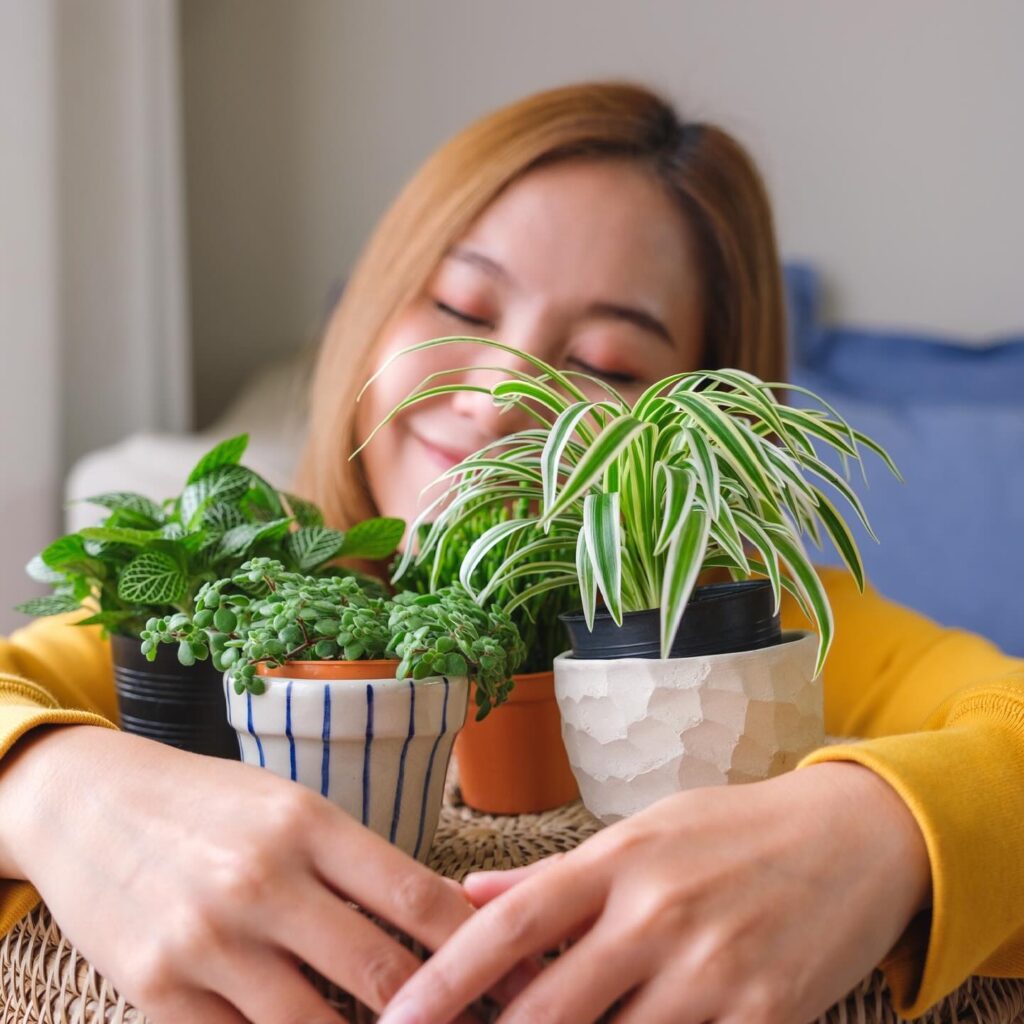
espomaorganic / Instagram
Best Overall: FoxFarm Ocean Forest Potting Soil Mix
Why This is a Quality Choice: The FoxFarm Ocean Forest Potting Soil Mix is an excellent choice for many types of indoor plants that thrive in loamy soil. It contains not only earthworm castings, like many other potting soils for indoor plants on this list, but also fish and crab meal for an extra, organic, nutrient boost for your plants. And, its great moisture retention means that you won’t have to water your plants every few days.
Who is this product for? Just about every indoor gardener would be well served by keeping a bag of this standout potting mix around.
Flaws but not deal-breakers: The FoxFarm Ocean Forest Potting Soil Mix feeds plants on its own for only 3–4 weeks, which is much less time than many other potting soils for indoor plants on this list. After that, you’ll have to feed them using plant food or fertilizer.
pH Level: 6.3 to 6.8 | Texture: Loamy | Ingredients: Earthworm castings, fish and crab meal, composted forest humus, sandy loam, and sphagnum peat moss | Package size: 12 quarts
Best Budget: Miracle-Gro Indoor Potting Mix, 16 qt. (2-Pack)
Why This is a Quality Choice: This 2-pack of Miracle-Gro Indoor Potting Mix delivers great value. The soil itself has a lot going for it. There’s lots of fertilizer in it, which means you won’t have to refresh the soil for six months. It’s also less susceptible to gnats as a result of the components that Miracle-Gro has chosen to include.
Who is this product for? I’d recommend this product to someone who wants to do a substantial amount of planting all at once. The large amount of fertilizer will ensure that you don’t run out halfway through.
Flaws but not deal-breakers: The pH level of the soil isn’t listed, but you can do a soil test or send some to a lab if you’re looking to plant something that’s extremely sensitive to acidity.
pH Level: Not listed | Texture: Loamy | Ingredients: Peat, Coir, Compost, Sphagnum Peat Moss, Perlite, Fertilizer, and a Wetting Agent | Package size: 16 quarts x 2
Best Organic: Espoma Organic Potting Soil Mix
Why This is a Quality Choice: This Espoma Organic Potting Soil Mix is unique because it contains a special blend of mycorrhizae fungi, which can help plants establish strong roots. And, its adequate drainage means that you can use it in everything from a simple pot to container gardens or grow bags. This makes it a great soil for growing vegetables indoors.
Who is this product for? Espoma Organic Potting Soil Mix is a great solution for gardeners who care about using organic products when growing inside.
Flaws but not deal-breakers: A few customers have reported that their potting soil had bugs living in it, but that’s a common risk that comes with buying even the best soils for indoor plants.
pH Level: Not listed, but contains limestone to prevent too much acidity | Texture: Loamy | Ingredients: Sphagnum peat moss, humus, perlite, alfalfa meal, kelp meal, and feather meal | Package size: 4 quarts
Best All-Purpose: Black Gold Sun Gro Horticulture
Why This is a Quality Choice: Black Gold Sun Gro Horticulture is a high-quality potting soil that indoor gardeners can use to plant almost anything. It contains a balanced 0.13-0.05-0.10 slow-release fertilizer, which can support plant growth for months. Their customers have reported success at growing everything from kale to tiger lilies.
Who is this product for? This product is great for gardeners who want a soil they can rely on without needing to add fertilizers or other compounds.
Flaws but not deal-breakers: There’s not a lot not to like about this potting soil, but some indoor gardeners might want to choose an option that doesn’t contain any fertilizer, as this one does.
pH Level: 6.5 | Texture: Very loamy | Ingredients: Sphagnum peat moss with worm castings, forest humus, and pumice | Package size: 20 lbs
Best Soil Discs: Window Garden Expanding Organic Fiber Soil
Why This is a Quality Choice: These Window Garden Expanding Organic Fiber Soil are essentially dehydrated discs of potting soil that expand the first time water is added to them. Each disc is portioned to provide enough soil to fill a 6” pot perfectly, which makes knowing how many to order a breeze.
Who is this product for? Many indoor gardeners love the compactness of soil discs, which makes them easy to transport and store.
Flaws but not deal-breakers: The high amount of coco coir in these discs can lead to very quick drainage and less water retention than potting soils that use more peat moss.
pH Level: Neutral | Texture: Sandy | Ingredients: coconut coir, compost, coarse sand, perlite, volcanic rock | Package size: 5 disks that expand to 10 quarts
Best for Succulents: Hoffman Organic Cactus and Succulent Soil Mix
Why This is a Quality Choice: Succulents need specific soil conditions to flourish. And, with its excellent drainage and sandy texture, Hoffman Organic Cactus and Succulent Soil Mix provides exactly that. The presence of high levels of compost in the mix means that it delivers an environment in which succulents can thrive for up to a year.
Who is this product for? As you’d expect, this potting soil was created for indoor gardeners who love their succulents and cacti.
Flaws but not deal-breakers: The presence of organic materials like peat moss and compost gives this potting soil for indoor plants a lot of nutrient value, but it can lead to drainage problems if you overpack the soil.
pH Level: Neutral | Texture: Sandy | Ingredients: Compost, peat moss, sand, and limestone | Package size: 4 quarts
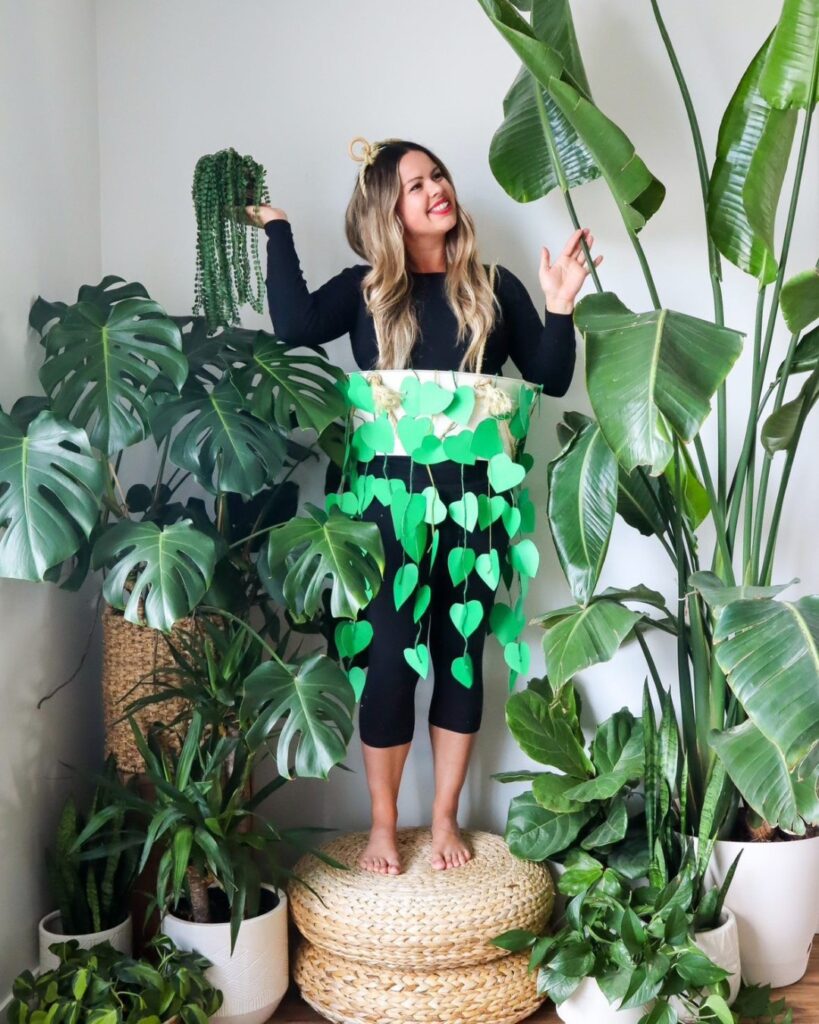
miraclegro / Instagram
Buying Considerations for The Best Soils For Indoor Plants
The Right Ingredients for your Plants
It’s crucial to find a soil for indoor plants that has the ingredients necessary for the specific type of plant you’re planning to grow. When you’re growing plants inside, you need to find a soil that provides conditions similar to a plant’s natural habitat. That’s why you need very different soil if you’re planting succulents than you would for growing African Violets.
Make sure to do your research about what type of environment your new plant needs before you click the Order button.
The Right Texture and Drainage
The texture of a potting soil is another important factor that you need to consider when planting. When gardeners talk about “texture,” they’re talking about the amount of sand, silt, and clay in the soil. How much of each part of soil will change how the soil feels and how it supports the root system of your plants.
Some types of plants (like succulents) need a sandy texture; others need a harder clay texture (Heuchera and Hosta). Finally, a “loamy soil” contains sand, silt, and clay in a roughly 4–4–2 ratio (i.e., twice as much of both sand and silt as clay).
Getting the right texture is crucial because how much sand, silt, and clay is in your soil will greatly affect the drainage rate of your pot.
Fertilizer content
Some of the potting soils for indoor plants we’ve gone over already have fertilizing components in them like nitrogen, phosphorus, and potassium. You’d expect that on a list of the best soils for indoor plants.
Some indoor gardeners like to buy soils that already have fertilizers in them, since they won’t have to add them on their own (at least initially). Other gardeners like the control that comes with adding fertilizers on their own because they can precisely adjust N–P–K levels to their liking.
In either case, it’s important to add some fertilizer or plant food to your pots some time after planting. That’s because many types of plants will quickly absorb all the nutrients in the initial round of fertilization quite quickly.
How I Choose These Products
Potting soil for indoor plants is such a huge topic that it took a lot of effort for me to narrow it down to just six options. After all, there are so many different types of plants people are growing these days and so many considerations.
So, I had to balance putting soils that are great for specific plants with those that will work for many different species. That meant I included a few all-purpose options but not one for African Violets.
When it comes to researching all these options, I relied on my experience of both specific products and the general quality and reputation of brands, as well as online reviews and testimonials from others who love indoor gardening. I trust that I have succeeded in helping you find the best soils for indoor plants for your needs!
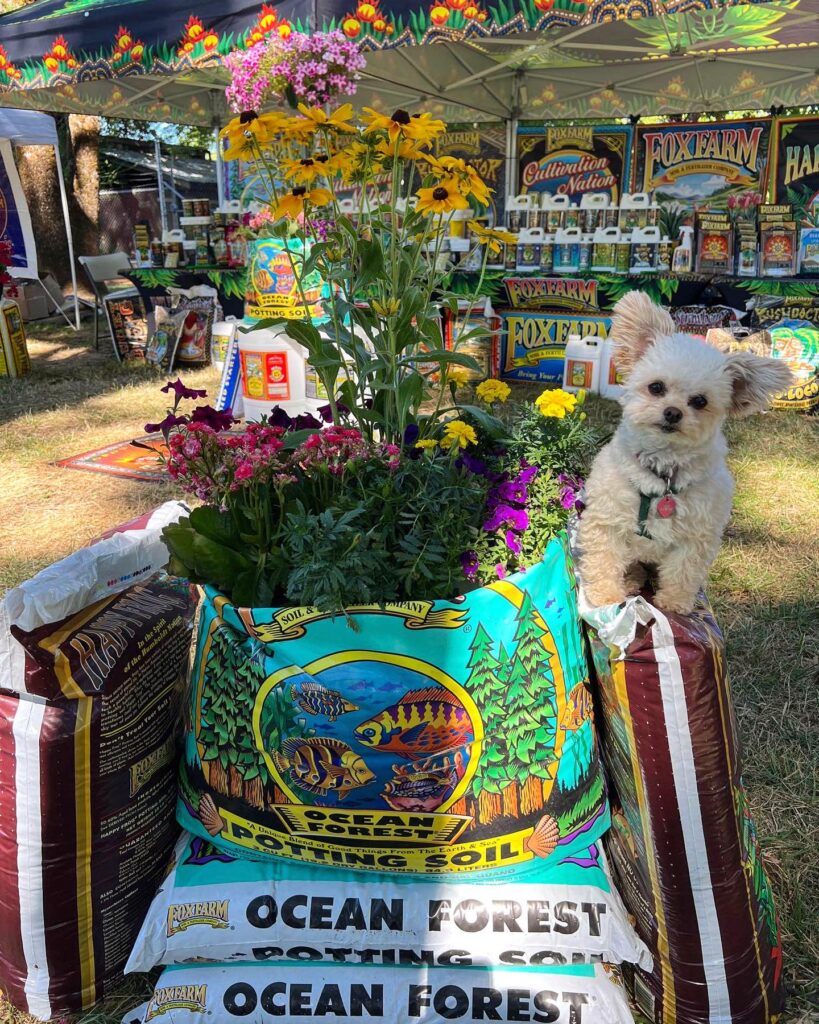
foxfarmsoilandfertilizer / Instagram
Final Verdict
At the end of the day, FoxFarm Ocean Forest Potting Soil Mix is the best of the best soils for indoor plants. Many other gardeners and I have relied on it for years and never looked back, using it for many different species that benefit from a standard, loamy soil.
Good luck with your plants!
FAQs
What type of soil is best for indoor plants?
There’s no general answer to what type of soil is best for indoor plants, since it depends on what species of plant you’re planning on growing. In general, however, a soil that provides good drainage and lots of nutrients is best for indoor plants.
Since indoor plants don’t benefit from natural processes that provide them with what they need to grow, it’s important to use high-quality potting soil and regularly provide them with fertilizers.
Can I use any potting soil for indoor plants?
No, you cannot use any potting soil for indoor plants because different types of indoor plants need different soil conditions to flourish. For instance, some plants like a slightly more or less acidic soil.
On top of that, indoor plants can be damaged if the soil you’re using doesn’t provide adequate drainage. That’s because waterlogging can harm the root systems of many different types of plants and lead to adverse effects.
What kind of soil is indoor soil?
Indoor soil is usually composed of mixtures of materials like coco peat, pumice, peat moss, and other organic materials that plants can grow in. These base ingredients are mixed with minerals like sand and clay to provide an environment where your plants can grow. Indoor soil is very different from the topsoil you might find outside in a garden.

